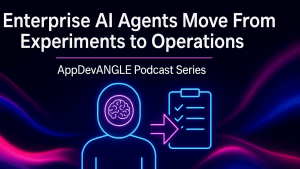
The Power of Arm: Unlocking Innovation in Edge AI and Consumer Tech
“Are people actually benefitting from AI? Do you have any great real-world examples of AI working?” These are the two most common questions I get from my personal community surrounding our industry. And as someone who covers the human side of tech, I believe one of the most important questions of our time. Recently I had the good fortune to discuss the actual impacts of AI in the consumer world with Chris Bergey, GM & SVP of Client Business at Arm.
Reaching a jaw-dropping 100% of the global connected population, Arm’s technology is ubiquitous and its impact is being felt across various industries. They also have the largest compute developer community, with over 2/3rds of the world’s devs. And while the three letter acronym darling as of late has been the GPU, the CPU is the cracker that compliments the cheese when it comes to your compute stack. Arm’s architecture ensures your chosen flatbread pairs perfectly with your cheese and the dining experience you’re looking to create. We highlight Arm’s position in this research note, but our full interview with Chris is required viewing for your Summer AI conversations.
The Breadth of Arm’s Reach
Arm’s technology is used in a wide range of devices, from smartphones and laptops to wearables and edge devices. The company’s ecosystem is vast with over 22 million developers working on Arm-based platforms. This broad reach, combined with Arm’s commitment to innovation, is driving the adoption of edge AI solutions across various industries.
As Bergey notes, “We’re very fortunate to be the place in the ecosystem that we are, but what’s cool is just to see with the base computing elements that we’re providing, what people are building on top of that because our ecosystem is so diverse and so capable.”
With its broad reach, commitment to innovation, and robust ecosystem, Arm is well-positioned to shape the future of edge AI and unlock new opportunities for industries and individuals alike. As edge AI continues to evolve, we can expect to see significant advancements in areas such as computer vision, natural language processing, and predictive analytics. The proliferation of edge devices, coupled with the need for AI-driven insights, is driving the demand for edge AI solutions.
One example of obvious note is AI PCs. AI PCs are expected to become increasingly important in the next 2-3 years. As Bergey notes, “I think that AI PC penetration is going to be very, very high, very, very quickly.” And our analysis confirms that AI PCs could reach over 50% market share within the next 12-24 months. This is driven by the need for more efficient and effective workflows, more efficient and sustainable machines, as well as the growing demand for AI-powered solutions at the edge.
Arm-Powered Devices at the Consumer Edge: Meta Ray-Ban Glasses
One of the most notable examples of Arm’s impact on consumer tech is the Meta Ray-Bans. They’re also one of the best examples of consumer edge AI at scale with over 2 million units sold. EssilorLuxottica leadership plans to ramp that to 10 million pairs a year by 2026. Beyond the notable sales numbers and impressive market share globally, the Meta Ray-Ban collaboration wisely avoided the primary pitfall of other wearable companies: designing something ugly. According to Chris Bergey, “The Arm-powered Meta Ray-Bans [are currently] the top seller in 60% of the Ray-Ban stores in Europe.” This product has hit a sweet spot, combining voice communication, search, and AI capabilities, making it a mainstream technology that has evolved in just a few years. Not to mention product software updates don’t require a hardware update.
The Meta Ray-Bans are not just the best selling XR glasses; they represent a significant advancement in wearable technology. With the ability to stream to the cloud and perform tasks such as search and AI-powered interactions, these specs are changing the way people interact with technology. As I remarked in our interview, “You can’t just make tech able to go on your face. You have to make it something that people want to wear on their face.” Not to mention the accessibility benefits of the product that leverages the aforementioned features for the deaf and hard of hearing and the blind and visually impaired. The glasses use AI to recognize things in the world around us and can provide captions on conversations. These are real-world, life-changing tools that foster accessibility and empower people to live better lives.

The Savvy Angle:
From wearable tech like the Meta Ray-Bans that seamlessly integrate AI into our daily lives, to the imminent rise of AI PCs set to transform productivity, Arm’s foundational technology is not just supporting, but actively helping to drive the real-world benefits of AI. With its unparalleled reach, robust developer ecosystem, and commitment to innovation, Arm is truly at the forefront of democratizing AI, ensuring that its transformative power is accessible and impactful for industries and individuals worldwide. While we may just be at the tip of the AI-benefit iceberg, it’s safe to say Arm has some of the best tools for navigating these early AI seas. As Bergey notes and I agree, “I think we’re just starting to get to some of those [transformational moments] on AI.” And this analyst is hungry to cover all of those stories and do drop me a note if you’ve got one.
In closing and the spirit of total transparency y’all are used to from this analyst, the breadth and reach of Arm isn’t what excites me the most about their potential to impact our AI future. It’s their unwavering commitment to ensuring that everyone of those 22 million developers feels welcome in their community. In a time when brands are actively deleting terms like “inclusion” from their lexicons, the fearless few still standing in solidarity stand out. This brave new world will be nothing if we don’t bring along all the great minds on this planet.


